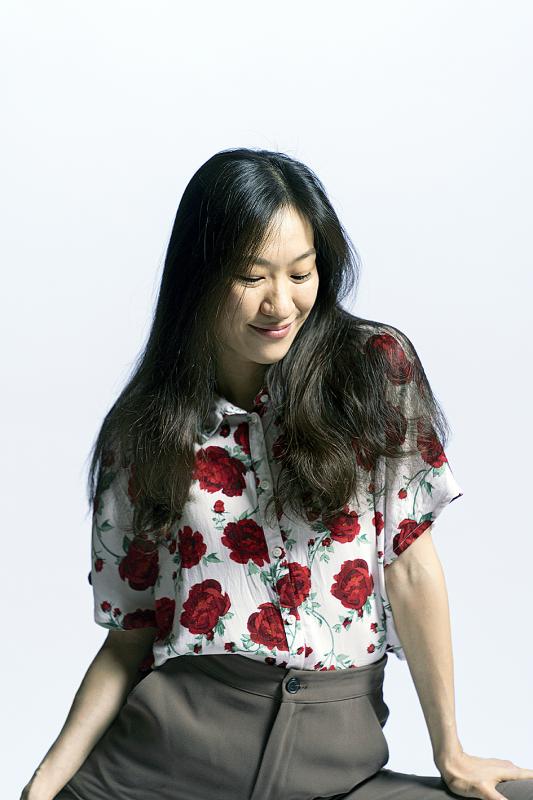If you happened to be out on the streets in New Taipei City’s Shulin District (樹林) and elsewhere on Monday, you might have noticed a bright yellow loudspeaker truck with black graffiti being driven around.
It was not part of a political campaign or hawking food or drygoods, but a delivery truck in search of audiences and participants for dancer-choreographer Huang Huai-te’s (黃懷德) Solo On The Go (來賓請掌聲鼓勵) show, part of the We Island Dance Festival: Shulin Jump (樹林跳:跳島舞蹈節) that opened on Monday and runs through Sunday next week.
The first We Island Dance Festival (WIDF, 跳島舞蹈節) was held in 2018 in Hsinchu, in a collaboration between the Hsinchu City Government, the Taipei-headquartered International Organisation of Scenographers, Theatre Architects and Technicians (OISTAT) and the Horse (驫舞劇場) dance collective.

Photo courtesy of We Island Dance Festival
As the organizers have said, few people in Taiwan decades ago believed that dancing was a legitimate job or that dancing was an art worthy of exploration, much less knew any dancers or saw live performances. Times have changed and Taiwan now has a strong track record as a home for internationally renowned dance companies, choreographers and dancers, but live dance performances remain out of reach for many people around the nation, especially those outside the big cities.
The aim in launching the WIDF was to break through theater barriers to reach people who might have never seen a live performance, and to create a touring platform for the nation’s professional artists and young dancers.
Two of the cofounders of Horse, Su Wei-chia (蘇威嘉) and Chen Wu-kang (陳武康), curated the first festival, recruiting fellow dancers and choreographers, as well as teachers.

Photo courtesy of We Island Dance Festival
The success of the Hsinchu festival led the New Taipei City Government to contact the pair about producing a festival in Shulin District this year to mark the opening of the Shulin Art and Culture Center (樹林藝文中心).
Su, Wei, OISTAT and their other collaborators put together a series of three productions and a variety of workshops and talks, many of which sold out quickly.
The Dance, Dance, Take Me On (舞蹈帶我走) series of four talks opened on Wednesday, while the Dance, Dance, We Are Not Alone (一起跳舞不孤單) workshop series began on Tuesday and runs through Thursday next week — and all sold out, proof that the demand is there for such programs.

Photo courtesy of We Island Dance Festival
The finale of the festival, the six-and-a-half-hour I am my body (身體我的名片), which gives 16 dancers 15 minutes each to explain about themselves and their dance styles, was another sell-out.
However, tickets are still available for My Turn (換我編舞) at the Shulin Art and Culture Center on Saturday next week, priced at NT$500 and available through the www.artsticket.com.tw Web site and convenience store ticket kiosks.
My Turn, overseen by dancer-choreographers Lin Yu-ju (林祐如) and Yu Yen-fang (余彥芳), was choreographed and will be performed by New Taipei City teenagers.
As for Huang, he will be back in the yellow truck roaming around New Taipei City on Saturday and on Friday next week, giving two free shows each day.
On Saturday, he will be at Tsing Dragon Lane (青龍嶺) from 9 to 10am, and from 3 to 4pm he will be at the Shulin Arts Center Outdoor Square (樹林藝文中心戶外廣場). Next Friday he will be in front of the Shulin Jian Temple (財團法人新北市樹林濟安宮) from 5 to 6pm and the Singren Garden Night Market (樹林興仁花園夜市) from 8 to 9pm.
■ More information about this year’s festival is available online, mostly in Mandarin, although the Web site does have links to ticketing: horse.org.tw/weislanddancefestival/).

Following the shock complete failure of all the recall votes against Chinese Nationalist Party (KMT) lawmakers on July 26, pan-blue supporters and the Chinese Communist Party (CCP) were giddy with victory. A notable exception was KMT Chairman Eric Chu (朱立倫), who knew better. At a press conference on July 29, he bowed deeply in gratitude to the voters and said the recalls were “not about which party won or lost, but were a great victory for the Taiwanese voters.” The entire recall process was a disaster for both the KMT and the Democratic Progressive Party (DPP). The only bright spot for

Aug. 11 to Aug. 17 Those who never heard of architect Hsiu Tse-lan (修澤蘭) must have seen her work — on the reverse of the NT$100 bill is the Yangmingshan Zhongshan Hall (陽明山中山樓). Then-president Chiang Kai-shek (蔣介石) reportedly hand-picked her for the job and gave her just 13 months to complete it in time for the centennial of Republic of China founder Sun Yat-sen’s birth on Nov. 12, 1966. Another landmark project is Garden City (花園新城) in New Taipei City’s Sindian District (新店) — Taiwan’s first mountainside planned community, which Hsiu initiated in 1968. She was involved in every stage, from selecting

As last month dawned, the Democratic Progressive Party (DPP) was in a good position. The recall campaigns had strong momentum, polling showed many Chinese Nationalist Party (KMT) lawmakers at risk of recall and even the KMT was bracing for losing seats while facing a tsunami of voter fraud investigations. Polling pointed to some of the recalls being a lock for victory. Though in most districts the majority was against recalling their lawmaker, among voters “definitely” planning to vote, there were double-digit margins in favor of recall in at least five districts, with three districts near or above 20 percent in

The great number of islands that make up the Penghu archipelago make it a fascinating place to come back and explore again and again. On your next trip to Penghu, why not get off the beaten path and explore a lesser-traveled outlying island? Jibei Island (吉貝嶼) in Baisha Township (白沙鄉) is a popular destination for its long white sand beach and water activities. However, three other permanently inhabited islands in the township put a unique spin on the traditional Penghu charm, making them great destinations for the curious tourist: Yuanbeiyu (員貝嶼), Niaoyu (鳥嶼) and Dacangyu (大倉嶼). YUANBEIYU Citou Wharf (岐頭碼頭) connects the mainland